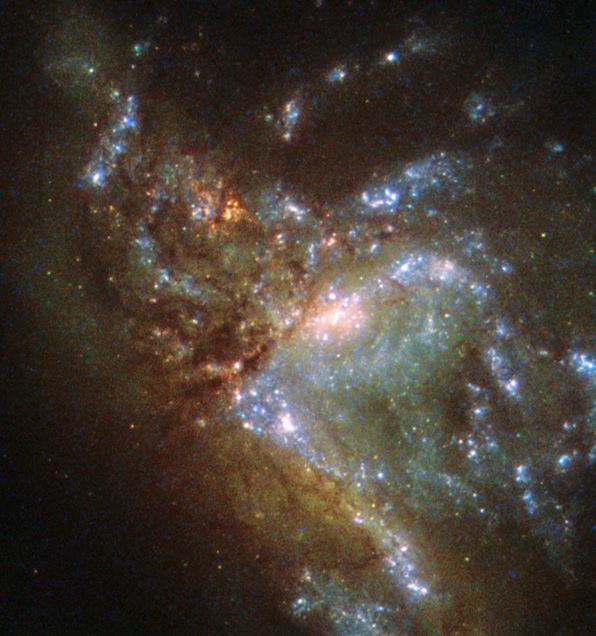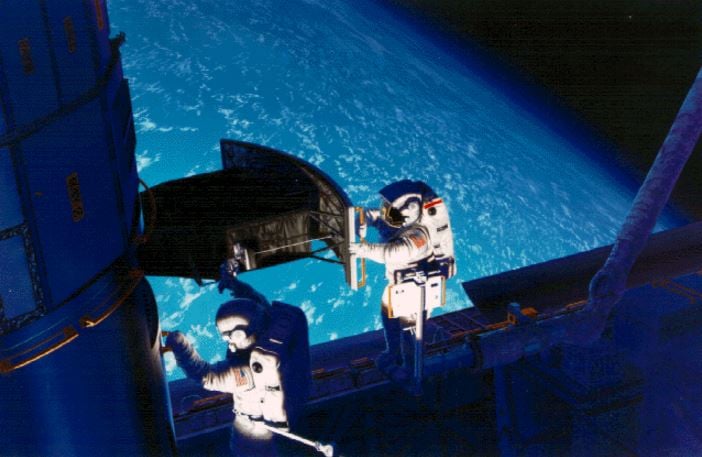This astonishing image of two galaxies merging was captured by the NASA/ESA Hubble Space Telescope using its Wide Field Planetary Camera 2. This is the first time such an event has ever been photographed. Scientists had initially thought it was a weird-looking single galaxy.
The image shows galaxy NGC 6052, which is in the constellation of Hercules, about 230 million light-years from the Earth.
According to NASA, it would be reasonable to view this as a single abnormal galaxy – and originally that is how it was classified.
 The ‘chaotic’-looking galaxy is in fact two galaxies merging into one. Eventually it will settle down and have a normal shape. (Image: www.nasa.gov. Acknowledgement: Judy Schmidt)
The ‘chaotic’-looking galaxy is in fact two galaxies merging into one. Eventually it will settle down and have a normal shape. (Image: www.nasa.gov. Acknowledgement: Judy Schmidt)
New galaxy being formed
It is, however, a ‘new’ galaxy in the process of being formed. Two distinct galaxies have been gradually drawn together, with the gravity from each pulling them closer together. They have collided, and now we see them merging into a single structure.
As the merging process evolves, individual stars are flung out of their original orbits and placed onto completely new trajectories, some very far away from where the collision is occurring.
Since the stars produce the light we observe, the ‘galaxy’ now seems to have an extremely chaotic shape.
In time, this newly-forming galaxy will settle down into a stable shape, which may look completely different from its two parent galaxies.
 This picture shows WFPC2 being inserted into Hubble during the First Servicing Mission. (Image: www.eso.org)
This picture shows WFPC2 being inserted into Hubble during the First Servicing Mission. (Image: www.eso.org)
Hubble’s WFPC2
The Wide Field and Planetary Camera 2, or WFPC2, was the Hubble Space Telescope’s workhorse camera for several years. It captured images through a selection of forty-eight colour filters covering a spectral range from near-infrared to far-ultraviolet wavelengths.
WFPC2’s ‘heart’ consisted of an L-shaped trio of wide-field sensors, as well as a smaller, high-resolution (Planetary) Camera placed at the square’s remaining corner.
WFPC2 has produced most of the spectacular photographs that have been released over the past few years. Its resolution and extraordinary quality were some of the reasons that WFPC2 was the most used device in Hubble’s first 13 years of life.
In 2009, WFPC2 was replaced by WFC3. After the Space Shuttle brought it back to Earth, WFPC2 was put on display at the Smithsonian National Air and Space Museum in Washington DC, next to parts from WFPC1, its predecessor.
Video – Hubble captures 2 merging galaxies for the first time
For the first time ever, the iconic Hubble Space Telescope has captured an image of two galaxies merging.
